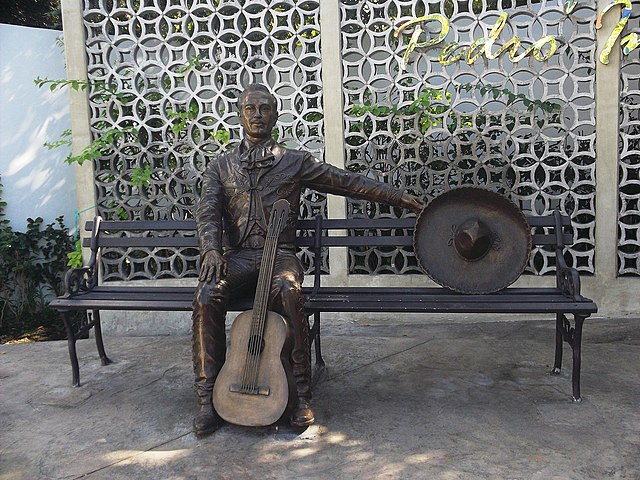The music of Mexico is highly diverse, featuring a wide range of musical genres and performance styles. It has been influenced by a variety of cultures, primarily deriving from Europeans, Indigenous, and Africans. Music became an expression of Mexican nationalism starting in the nineteenth century. Mariachi, the musical organization that currently identifies Mexico, is an artistic expression that unifies the country and its inhabitants through its sounds. In November 2011, UNESCO inscribed Mariachi music, featuring strings, vocals, and trumpets, as part of the Representative List of the Intangible Cultural Heritage of Humanity.
A statue of Pedro Infante in Mérida, Yucatán, stands as a tribute to one of the 'Three Mexican Roosters' of Mexican music, along with Jorge Negrete and Javier Solís.
Carlos Chávez, composer, conductor, educator, and cultural figure of the 20th century.
Los Folkloristas a musical group formed in Mexico City in 1966 and dedicated to the research, execution, and dissemination of traditional Latin American music. Since its creation, almost fifty musicians have passed through the group.
Accordion
Mariachi is an ensemble of musicians that typically play ranchera, the regional Mexican music dating back to at least the 18th century, evolving over time in the countryside of various regions of western Mexico. The usual mariachi group today consists of as many as eight violins, two trumpets and at least one guitar, including a high-pitched vihuela and an acoustic bass guitar called a guitarrón, and all players taking turns singing lead and doing backup vocals.
Mariachi
Figures depicting an old-style mariachi band in clay by José Guadalupe Panduro of Tonalá, Jalisco, on display at the Museo de Arte Popular in Mexico City
Mariachi woman in modern attire playing the violin
Mariachi singer








